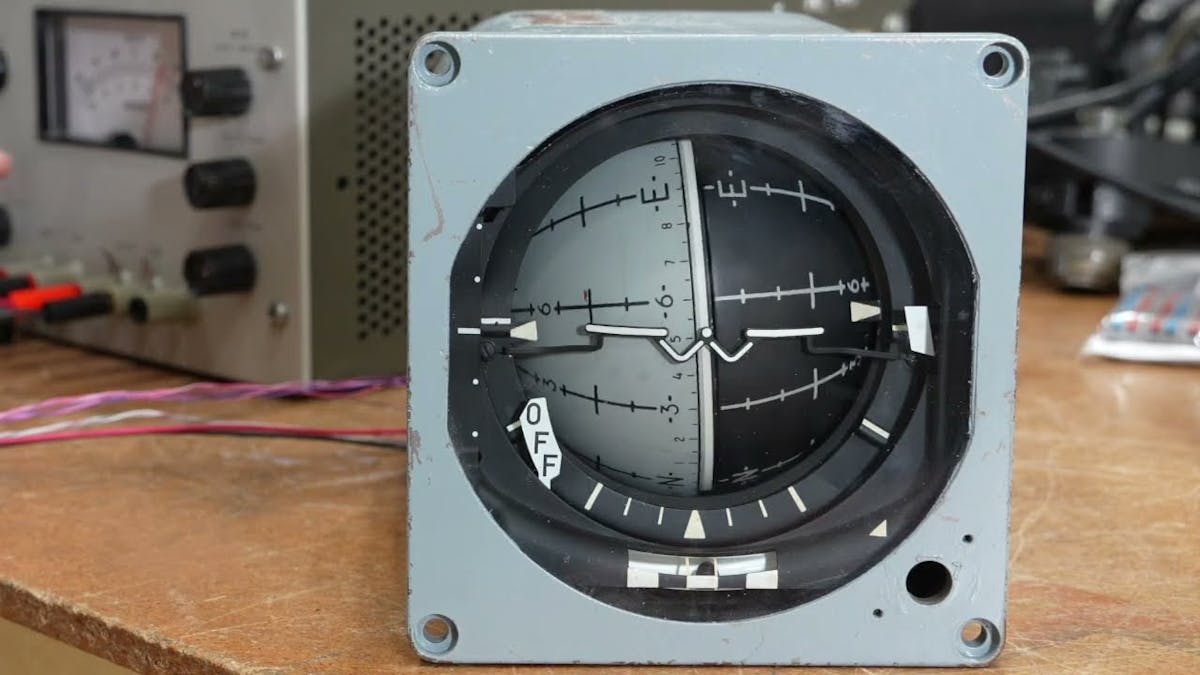Ken Shirriff, Eric Schlaepfer, and Marc Verdiell Get an F-4's Three-Axis Artificial Horizon Humming
This 1960s piece of aircraft instrumentation has an unusual trick: tracking the aircraft's attitude in three axes, rather than two.

Noted reverse engineer Ken Shirriff, working with Eric Schlaepfer and Marc Verdiell, has turned his attention to a three-axis attitude indicator instrument, taken from the cockpit of a scrapped McDonnell Douglas F-4 Phantom II jet — in order to figure out how the gadget can rotate in all three axes.
"In a normal aircraft," Shirriff explains, "the artificial horizon shows the orientation in two axes (pitch and roll), but the F-4 indicator uses a rotating ball to show the orientation in three axes, adding azimuth (yaw). It wasn't obvious to me how the ball could rotate in three axes: how could it turn in every direction and still remain attached to the instrument?"
Taking the instrument to pieces, Shirrif began by reverse-engineering the circuitry inside — cutting-edge technology for the 1960s, when it was produced, but long-outdated by modern standards. The electronics control three motors that handle roll, pitch, and azimuth, with the former motor attached to the frame and the remaining two inside the indicator ball itself.
"When the roll gimbal is rotated, [the] mechanism rotates with it," Shirrif explains for how the gadget works across all three axes. "The pitch motor causes the entire mechanism to rotate around the pitch axis, which is attached along the 'equator.' The azimuth motor turns the vertical shaft. The two hollow hemispheres of the ball attach to the top and bottom of the shaft. Thus, the azimuth motor rotates the ball shells around the azimuth axis, while the mechanism itself remains stationary."
With a pair of slip-rings to connect everything up, the mystery was solved — but the indicator Shirriff had was damaged, having apparently been used at some point in time as a source of spare parts, necessitating some repair work before it could be made to run again. Tracing out the schematic of the indicator's matching amplifier — which, to add confusion, could be one of two incompatible models — Shirrif was able to get the hardware back up and running again.
Shirriff isn't the only one interested in vintage airplane instrumentation: maker Glen Akins has been working on interfacing classic aircraft display systems to modern hardware for the past several years, turning a tachometer into a CPU usage gauge, an altimeter into a mountain bike ride tracker, and offering a digital decoder for a synchro-based altitude warning system, among others.
The full project is documented on Shirrif's blog.
Freelance journalist, technical author, hacker, tinkerer, erstwhile sysadmin. For hire: freelance@halfacree.co.uk.


